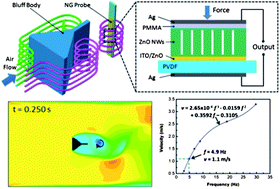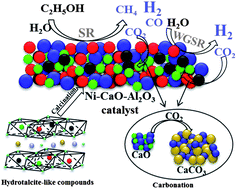This month sees the following articles in EES that are in the top ten most accessed in May:
Review of solutions to global warming, air pollution, and energy security
Mark Z. Jacobson
Energy Environ. Sci., 2009, 2, 148-173
DOI: 10.1039/B809990C
A polymer electrolyte-skinned active material strategy toward high-voltage lithium ion batteries: a polyimide-coated LiNi0.5Mn1.5O4 spinel cathode material case
Ju-Hyun Cho, Jang-Hoon Park, Myeong-Hee Lee, Hyun-Kon Song and Sang-Young Lee
Energy Environ. Sci., 2012, 5, 7124-7131
DOI: 10.1039/C2EE03389E
Growth of ultrathin mesoporous Co3O4 nanosheet arrays on Ni foam for high-performance electrochemical capacitors
Changzhou Yuan, Long Yang, Linrui Hou, Laifa Shen, Xiaogang Zhang and Xiong Wen (David) Lou
Energy Environ. Sci., 2012, 5, 7883-7887
DOI: 10.1039/C2EE21745G
Seed-assisted synthesis of highly ordered TiO2@α-Fe2O3 core/shell arrays on carbon textiles for lithium-ion battery applications
Yongsong Luo, Jingshan Luo, Jian Jiang, Weiwei Zhou, Huanping Yang, Xiaoying Qi, Hua Zhang, Hong Jin Fan, Denis Y. W. Yu, Chang Ming Li and Ting Yu
Energy Environ. Sci., 2012, 5, 6559-6566
DOI: 10.1039/C2EE03396H
Carbon dioxide—a themed issue
Frederik C. Krebs
Energy Environ. Sci., 2012, 5, 7238-7239
DOI: 10.1039/C2EE90018A
Trends in patent applications for dye-sensitized solar cells
Henrik Pettersson, Kazuteru Nonomura, Lars Kloo and Anders Hagfeldt
Energy Environ. Sci., 2012, 5, 7376-7380
DOI: 10.1039/C2EE03323B
Butterflies: inspiration for solar cells and sunlight water-splitting catalysts
Shuai Lou, Xingmei Guo, Tongxiang Fan and Di Zhang
Energy Environ. Sci., 2012, Advance Article
DOI: 10.1039/C2EE03595B
Rechargeable Li–O2 batteries with a covalently coupled MnCo2O4–graphene hybrid as an oxygen cathode catalyst
Hailiang Wang, Yuan Yang, Yongye Liang, Guangyuan Zheng, Yanguang Li, Yi Cui and Hongjie Dai
Energy Environ. Sci., 2012, 5, 7931-7935
DOI: 10.1039/C2EE21746E
High efficiency polymer solar cells based on poly(3-hexylthiophene)/indene-C70 bisadduct with solvent additive
Xia Guo, Chaohua Cui, Maojie Zhang, Lijun Huo, Ye Huang, Jianhui Hou and Yongfang Li
Energy Environ. Sci., 2012, 5, 7943-7949
DOI: 10.1039/C2EE21481D
Graphene based new energy materials
Yiqing Sun, Qiong Wu and Gaoquan Shi
Energy Environ. Sci., 2011, 4, 1113-1132
DOI: 10.1039/C0EE00683A
Why not take a look at the articles today and blog your thoughts and comments below
Fancy submitting an article to EES? Then why not submit to us today!



















